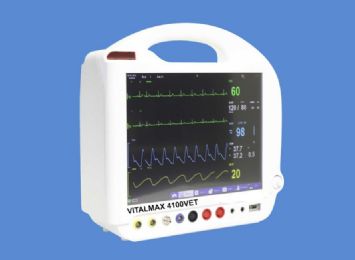
A patient monitor is an electronic medical device that consists of one of more monitoring sensors, a processing component(s), and a screen display (also called a "monitor") that provide and record for medical professionals a patient's medical vital signs (body temperature, blood pressure, pulse rate and respiratory rate) or measurements of the activity of various body organs such as ECG monitors, anesthesia monitors, or EKG monitors.




















Medical professionals and healthcare providers routinely monitor four main vital signs: body temperature, pulse rate, respiratory rate and blood pressure. In the medical practice of cardiology, the measurement and recording of the electrical activity of the heart over a period of time (known as ECG / EKG or electrocardiography) is also fundamental to patient care.
Multi-parameter patient monitors support the conduct of patient care in doctors’ offices, outpatient facilities, hospital operating rooms, hospital critical care facilities, and during EMS and non-emergency ambulance transport. There may also be a need for bedside measurement of vital signs in low-acuity post-anesthetic care and during sleep studies. Patient monitors are used to monitor adults, pediatrics and neonates.
Particular vital signs may be the most important to monitor in varying medical situations. For example, the measurement of SpO2 (“saturation of peripheral oxygen”) is needed during surgery and in the recovery room to ensure proper patient care.
Multi-parameter patient monitors provide the composite view required, at a glance. Many include configurable vital signs settings and both audio and visual comprehensive alarms. Various sizes exist, with variable numbers of parameters monitored. Portability and multi-use capabilities offer high cost-performance ratios by negating the need for multiple types of monitors. This vital equipment provides care teams more of the information they need while at the patient’s side.
Patient Monitor features and capabilities
Patient monitors are sometimes referred to as vital signs monitors, ECG monitors, EKG monitors or anesthesia monitors. Regardless of the label used, the multi-parameter nature and portability make the nearly dozen monitors offered by Rehabmart useful in a variety of settings.
Choose the monitors that best meet your clinical needs.
Key features and benefits available in specific models include:
Compact and easy to transport
Convert easily from basic vital signs to operating room to bedside monitor
Portability to support ambulatory fieldwork
Support multi-language operating interface
High-resolution LCD screens with adjustable contrast and brightness
Configurable to display selected vital signs
Drug dose calculations
Store individual patient data records (some up to 360 hours)
SD card data storage capable
USB port available
Built-in WAN technology or LAN port for real-time data transmission
Capable of networking with a central monitoring station
Support HL7 data standards (interface with electronic medical records platform)
Optional printing function to print clinical data in real time
Should you need assistance choosing the right product for your needs, do not hesitate to contact us. We’d be happy to help.
Rehabmart carries an assortment of superior quality patient monitors from noted vendors Venni Medical and DRE Medical.
Hulet Smith, OT
Rehabmart Co-Founder & CEO
nrb